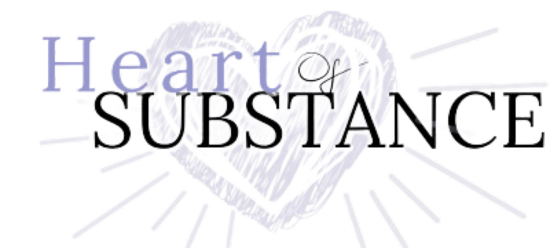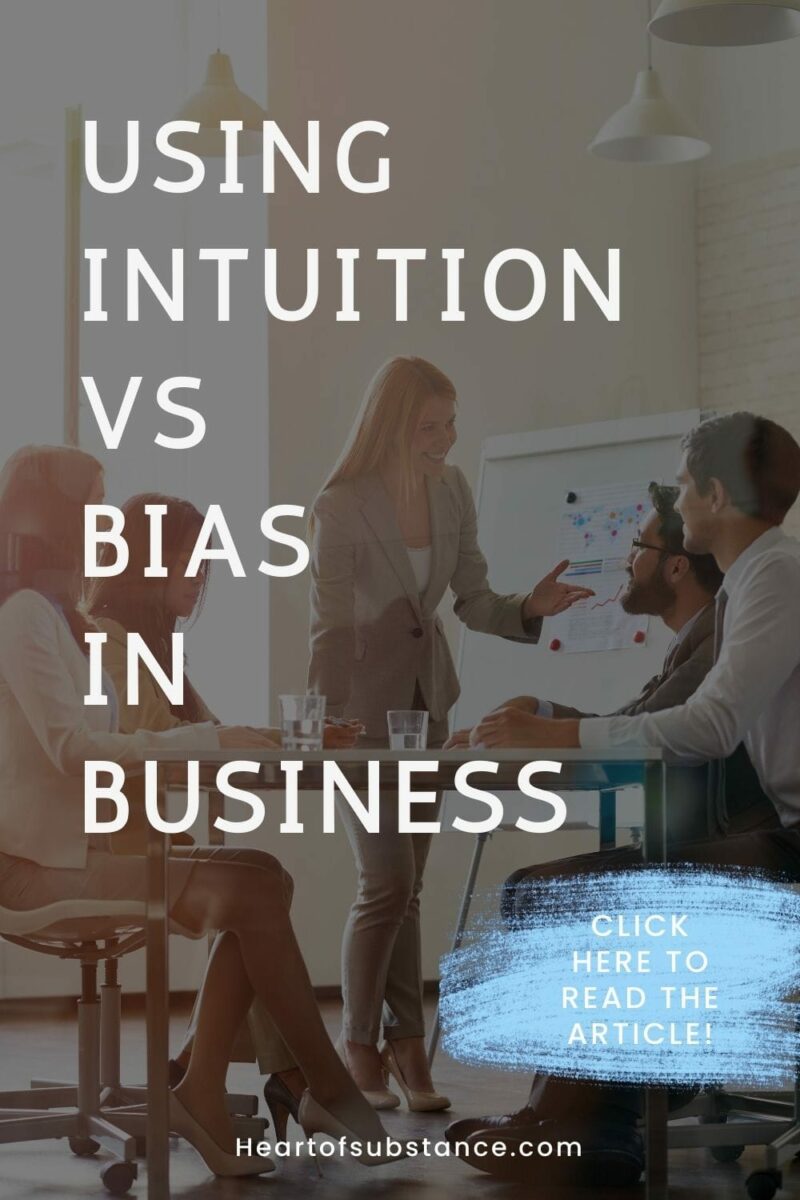Some say bias is part of intuitive thinking. Others: professional intuition and bias are two distinct concepts when it comes to fast decisions make in the workplace or business.

The following is what I’ve discovered in literature around these two concepts that can affect professional judgement and decision-making in the workplace / business area…
Key Takeaway
Professional intuition and bias are concepts involved in decision making. While both can be seen as mental short-cuts, there are key factors indicated in business research that set them apart:
| Source | Subconscious accumulated awareness | Stemmed from personal beliefs, emotions, and past experiences |
| Nature | Subconscious – fast thinking from pattern and subtle cue recognition | Conscious or subconscious – judgmental and irrational thinking |
| Role | Helps with urgent decision-making in complex situations | Can hinder decision-making by preventing consideration of alternative viewpoints or ideas |
| Objectivity | Relies on objective data, facts, and evidence to support decision-making | Can be subjective and influenced by personal opinions and emotions |
| Outcome | Can result in better decision-making and outcomes based on expert judgement | Can lead to poor decisions, unfair treatment, and discrimination |
| Control | Can be controlled and improved through continuous learning and development | Can be difficult to control and overcome due to ingrained personal beliefs and biases |
The last point in the table, “Control”, is the reason why identifying any conflicts of interest is important. Bias “can be difficult to control and overcome”. A biased decision has downsides.
While many web articles relate intuitive thinking to bias and heuristics, studies in the field of business show that these concepts are not the same, read on…
Intuition vs bias
You could think of it in this fun way: Intuition is this secret whisper, nudging you towards a decision. It has no logic to it. And then there’s bias that’s like the sneaky pickpocket waiting to steal away your impartiality and nudge you toward playing favorites.
But let’s be serious. Dane and Pratt (2007) defined intuition as “affectively charged judgments that arise through rapid, nonconscious, and holistic associations”.
It’s where you understand or ‘know’ something without conscious reasoning or deliberation. It is sometimes described as a “gut feeling”, a “hunch”, or a “sixth sense.” It fires from the subconscious where you have this accumulation of past and present insights. If you’re a person who ‘connects dots’ easily, you may be an intuitive thinker.
True intuition is objective vs subjective. If you’re feeling emotional, it’s probably not intuition guiding you, as I explain in my article about fear vs intuition.
You may be conscious, or not, of your biases. Sometimes we aren’t aware or we deny our biases.
Biases are often deeply ingrained in our thought processes and can influence our perceptions, judgments, and decisions. These are the preconceived beliefs and opinions that can influence your judgement.
For a better understanding, let’s look at some biases affecting professional judgement and decision making…
Cognitive biases in decision-making
Psychologists Amos Tversky and Daniel Kahneman (1974) pioneered the concept of cognitive bias. It refers to the systematic errors or deviations that occur in our thinking and decision-making with our brain’s tendency to simplify information processing.
Here are four bias types that can arise in decision-making:
- Confirmation bias (fits your existing beliefs)
- Anchoring bias (first impressions)
- Availability heuristic (comes to mind easily)
- Overconfidence effect (overzealous view)
Confirmation bias
Confirmation bias refers to the tendency of individuals to seek out or interpret information in a way that confirms their pre-existing beliefs or hypotheses.
In practice, it means you are more likely to pay attention to evidence that supports what you already believe rather than evidence that contradicts it.
This bias can occur in a variety of settings, including politics, religion, science, and everyday life. Confirmation bias can be a powerful force, leading people to hold onto their beliefs even in the face of overwhelming evidence to the contrary. It can also lead to misunderstandings and conflict when people with different beliefs fail to recognize or acknowledge the validity of each other’s perspectives.
Anchoring bias
Anchoring bias occurs when you place more value on the first piece of information (the “anchor”) you receive. This bias can result in the wrong judgments because you overlook all the relevant pieces of information.
As an example: You’re a hiring manager interviewing job candidates. The first candidate comes across as polished and confident, and you’re impressed. You may unconsciously anchor your judgement on this first candidate, leading you to subconsciously compare all subsequent candidates to this first one.
If you’ve ever been on a selection panel, you will relate to the potential for this type of bias.
You may also be more lenient towards the first candidate’s weaknesses, such as overlooking a lack of experience in a certain area, because you were impressed overall. This can lead to a biased hiring decision, where you choose the first candidate even if another candidate is more qualified.
Anchoring bias can be challenging to overcome. It’s important to be aware of this bias and aim for objectivity.
Overconfidence effect bias
The overconfidence effect refers to a person’s tendency to overestimate their abilities or the accuracy of their judgments. This can be particularly dangerous in professional judgment scenarios, where overconfidence can lead to errors, incorrect decisions, and poor outcomes.
One example is in the stock market, where overconfident investors may believe that they have superior knowledge or insight that allows them to make better investment decisions than others. They may take excessive risks, invest too heavily in a single stock or sector, or ignore contradictory evidence that could affect their decision-making. As a result, they may suffer significant financial losses.
Entrepreneurs lean toward this bias, according to one study (2000).
Availability heuristic biases
The availability heuristic is a mental shortcut where you make decisions or judgments based on the ease with which examples come to mind. This is because people tend to believe the things they can easily recall or remember are more important, common, or likely to occur than things that are less memorable or easy to recall.
This mental shortcut can lead to biases in decision-making since it may cause you to ignore information that is more relevant but less accessible in your memory.
For example, someone may overestimate the likelihood of a plane crash because they can easily recall news stories about plane crashes, even though statistically speaking, car accidents are much more common.
A modern version is the algorithms of artificial intelligence where they might place emphasis on sources that are the easiest available rather than those that are in the best interest of the demography.
This just four. There are more types of bias that can affect your decision making, which you can read about at the Catalogue of Bias or the Mind Tools site .
Decision-making processes in general
It is important to be aware of your biases in order to make informed decisions and avoid errors in judgment. Intuition is important in business dealings where there’s complexity and a need for a quick response.
Indeed, many managers use an intuitive approach to decision-making, particularly in unstable environments where there are no dominant solutions.
~ Kopelle et al., 2023
I’ve often written about intuition being a powerful tool in everyday life. Especially… where it has greatly rewarded society – see my article on inventors who attribute their success to intuition.
Now, in the context of professional judgement…
Professional judgement using intuition
Professional intuition happens on a subconscious level and is without deliberation, computing an outcome, taking in a scan of the potential risks and opportunities.
Our framework reveals five roles of intuition: synthesizing, estimating, scanning, confirming and energizing.
~ Kopelle et al., 2023, in The role of intuition in CEO acquisition decisions
Intuitive thinking draws an interpretation of patterns from our accumulated awareness of empirical evidence and the like, relevant to the field of our decision-making interest.
Is intuition an act of bias?
You’ll find many articles on the free web indicating bias and heuristics as part of intuitive thinking.
A very recent publication by Kopalle and others, in Business Research November 2023, reveals otherwise – that the two concepts are different, per the work of Hodgkinson and Sadler-Smith (2018) and Samba et al. (2022). They note the two concepts are often confused because in decision making, both are mental shortcuts.
I’ll leave you with this…While intuition is a valuable tool, it helps to maintain an open mind and a willingness to consider new evidence.




